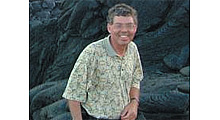
Doug Lung NIST offers timing signals via RF at frequencies ranging from 60 kHz to 20 MHz. While suitable for many timekeeping applications, greater precision is required for scientific work, geodesy (altitude mapping) and navigation. This week NIST reported a demonstration of Ultraprecise Time Signals over a Wireless Optical Channel. “By bouncing eye-safe laser pulses off a mirror on a hillside, researchers at the National Institute of Standards and Technology (NIST) have transferred ultraprecise time signals through open air with unprecedented precision equivalent to the "ticking" of the world's best next-generation atomic clocks.”
The signal transfer demonstration used optical frequency combs on two low-power infrared laser beams. The frequency comb generates a steady stream of ultrashort optical pulses with a spacing that can be synchronized with the “ticks” of an optical atomic clock.
If you are wondering how the link deals with turbulence in the atmosphere, NIST says that because the turbulence affects both directions equality, it can be canceled out. It can also handle signal losses due to temporary obstruction of the light path. NIST said the method should be able to operate a much longer distances, possibly over future ground-to-satellite optical communications links.
The professional video industry's #1 source for news, trends and product and tech information. Sign up below.

Doug Lung is one of America's foremost authorities on broadcast RF technology. As vice president of Broadcast Technology for NBCUniversal Local, H. Douglas Lung leads NBC and Telemundo-owned stations’ RF and transmission affairs, including microwave, radars, satellite uplinks, and FCC technical filings. Beginning his career in 1976 at KSCI in Los Angeles, Lung has nearly 50 years of experience in broadcast television engineering. Beginning in 1985, he led the engineering department for what was to become the Telemundo network and station group, assisting in the design, construction and installation of the company’s broadcast and cable facilities. Other projects include work on the launch of Hawaii’s first UHF TV station, the rollout and testing of the ATSC mobile-handheld standard, and software development related to the incentive auction TV spectrum repack. A longtime columnist for TV Technology, Doug is also a regular contributor to IEEE Broadcast Technology. He is the recipient of the 2023 NAB Television Engineering Award. He also received a Tech Leadership Award from TV Tech publisher Future plc in 2021 and is a member of the IEEE Broadcast Technology Society and the Society of Broadcast Engineers.
